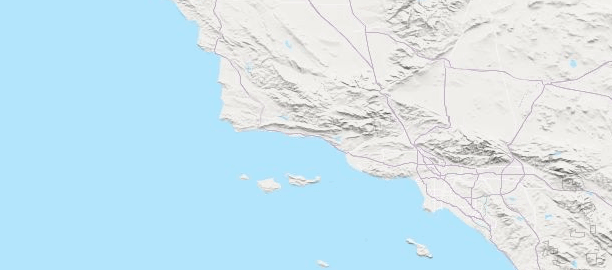Located in the heart of California’s stunning coastline, the Sandpiper Golf Club is a world-renowned destination for golf enthusiasts and nature lovers alike. Perched on a bluff overlooking the Pacific Ocean, this majestic golf course is nestled among rolling hills, sandy dunes, and native vegetation, providing an unparalleled golfing experience that combines challenging play with breathtaking scenery.
With its inception dating back to 1981, the Sandpiper Golf Club was designed by the esteemed architect William F. Bell, who crafted a layout that not only respects the natural topography of the land but also challenges golfers of all skill levels. The course spans 7,104 yards from the back tees, featuring 18 holes that wind through a diverse landscape of coastal wetlands, oak woodlands, and open grasslands. Each hole presents a unique test of skill and strategy, with undulating greens, well-placed bunkers, and scenic vistas that distract and delight in equal measure.
One of the standout features of the Sandpiper Golf Club is its proximity to the ocean. Several holes, including the 10th, 11th, and 12th, run along the edge of the bluff, offering players a thrilling opportunity to drive or pitch their balls while taking in the salty sea air and the sounds of the crashing waves below. The 10th hole, in particular, is a favorite among golfers, as it requires a precise drive over a coastal canyon to reach the green, which is perched precariously close to the ocean’s edge.
Beyond its natural beauty and challenging play, the Sandpiper Golf Club is also committed to environmental sustainability. The course has implemented a range of eco-friendly practices, including the use of reclaimed water for irrigation, the creation of wildlife habitats, and the reduction of chemical pesticides and fertilizers. This dedication to environmental stewardship has earned the course numerous awards and certifications, including certification as an Audubon International Sanctuary.
For golfers looking to improve their game, the Sandpiper Golf Club offers a range of instructional programs and facilities, including private lessons, group clinics, and a state-of-the-art practice range. The club’s PGA-certified instructors provide personalized coaching and feedback, helping players of all levels to refine their technique, build confidence, and enhance their overall golfing experience.
In addition to its exceptional golfing facilities, the Sandpiper Golf Club is also renowned for its warm hospitality and excellent amenities. The club’s restaurant and bar serve a delicious range of cuisine, from hearty breakfasts to elegant dinners, while the pro shop offers a wide selection of golfing equipment, apparel, and accessories. Visitors can also relax and unwind in the club’s comfortable lounges, take a stroll around the beautifully landscaped grounds, or simply sit back and enjoy the stunning views of the Pacific Ocean.
Historical Evolution of Golf Course Design
The design of golf courses like the Sandpiper Golf Club reflects a long and evolving history, influenced by advances in technology, changes in player preferences, and shifting environmental concerns. In the early days of golf, courses were often designed with minimal intervention, incorporating natural features and terrain to create challenging and unpredictable play. As the game gained popularity and new technologies emerged, course designers began to adopt more sophisticated approaches, incorporating features like bunkers, water hazards, and precisely manicured greens.
Today, golf course design is a highly specialized field, with architects and designers drawing on a range of skills and expertise to create courses that are not only challenging and enjoyable but also sustainable, environmentally responsible, and visually stunning. The Sandpiper Golf Club, with its masterful blend of natural beauty, challenging play, and eco-friendly practices, represents the cutting edge of modern golf course design, offering an unforgettable experience for golfers and nature lovers alike.
According to golfing experts, the key to a successful golf course design lies in its ability to balance challenge and playability, while also respecting the natural environment and incorporating sustainable practices. The Sandpiper Golf Club is a prime example of this approach, offering a unique and unforgettable golfing experience that combines stunning natural beauty with expertly crafted challenges and opportunities for improvement.
Comparing Golf Courses: Sandpiper vs. Other Coastal Courses
While the Sandpiper Golf Club is undoubtedly one of the most beautiful and challenging golf courses in California, it is not alone in its class. Other coastal courses, such as Pebble Beach and Torrey Pines, also offer stunning ocean views, challenging play, and a range of amenities and facilities. However, each course has its own unique character and attractions, reflecting the diverse landscapes, climates, and cultural contexts of their respective locations.
In comparison to other coastal courses, the Sandpiper Golf Club stands out for its exceptional natural beauty, its commitment to environmental sustainability, and its challenging yet playable design. While Pebble Beach is famous for its picturesque scenery and exacting standards, Torrey Pines is renowned for its dramatic cliffside setting and demanding layout. The Sandpiper Golf Club, meanwhile, offers a more relaxed and naturalistic experience, with its rolling hills, sandy dunes, and abundant wildlife creating a sense of tranquility and connection to nature.
| Course | Location | Designer | Length (yards) | Rating |
|---|---|---|---|---|
| Sandpiper Golf Club | California | William F. Bell | 7,104 | 74.3 |
| Pebble Beach Golf Links | California | Jack Neville and Douglas Grant | 6,828 | 74.8 |
| Torrey Pines Golf Course | California | William F. Bell | 7,435 | 77.4 |

Step-by-Step Guide to Playing the Sandpiper Golf Club
For golfers planning to play the Sandpiper Golf Club, here is a step-by-step guide to help you prepare and make the most of your experience:
Step 1: Book Your Tee Time
Reserve your tee time well in advance, especially during peak season. The Sandpiper Golf Club offers online booking and a range of packages and promotions to suit different needs and budgets.
Step 2: Warm Up and Practice
Arrive early to take advantage of the club's practice facilities, including the driving range, putting green, and chipping area. This will help you loosen up and get a feel for the course conditions.
Step 3: Study the Course Layout
Familiarize yourself with the course layout, paying attention to the location of hazards, bunkers, and key features like the ocean views and wildlife habitats. This will help you plan your strategy and make informed decisions on the course.
Step 4: Play with a Caddie or GPS
Consider hiring a caddie or using a GPS device to help navigate the course and provide valuable insights and advice. This can be especially helpful for first-time players or those looking to improve their game.
Step 5: Respect the Environment
Remember to respect the natural environment and wildlife habitats on the course, taking care to avoid disturbing sensitive areas and following all rules and guidelines for environmental sustainability.
FAQ Section
What are the course ratings and slope ratings for the Sandpiper Golf Club?
+The course rating for the Sandpiper Golf Club is 74.3, with a slope rating of 137 from the back tees. However, these ratings can vary depending on the tee box and other factors, so it’s always a good idea to check with the club for the most up-to-date information.
Can I hire a caddie or take a golf cart at the Sandpiper Golf Club?
+Are there any dining or hospitality facilities at the Sandpiper Golf Club?
+The Sandpiper Golf Club features a range of dining and hospitality facilities, including a restaurant, bar, and pro shop. The club also offers special events and promotions, such as wine tastings and live music nights, so be sure to check the calendar for upcoming activities.



